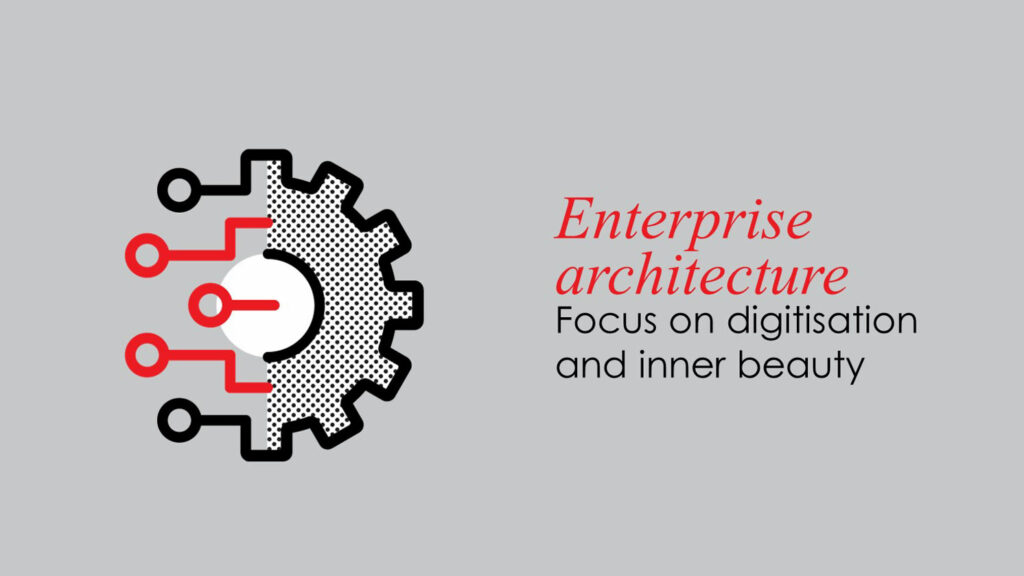
Advisers should focus on digitisation and inner beauty
Flowers in reception and mints in meeting rooms are nice but they don’t move the dial on performance. Advice businesses need to spend more time on the unseen to ensure the right enterprise architecture to underpin growth.
The expression ugly on the inside is used to describe someone who is not very nice although they may be good looking.
A business analogy could be a firm with really nice premises in a premier location but a back office in disarray.
This is all too common in accounting and financial advice.
There has been minimal investment in the systems, processes and technology that underpin the structure and operations of advisory firms.
This invisible blueprint is often described as an organisation’s enterprise architecture and it determines how efficiently a business can deliver goods and services and, ultimately, achieve its goals and objectives.
The industry’s lack of investment in systems, processes and technology stems from its product selling roots.
Advice, in the past, was synonymous with distribution and treated as a means to an end.
As such, it did not attract the capital it needed and deserved to build robust, flexible and scalable operations.
Today, there is widespread acceptance of the growing value of the advice margin, evidenced by the significant multiples professional advisory businesses are commanding, but there still isn’t enough investment in enterprise architecture.
For advisory businesses that aspire to become a leading firm of the future, a defined enterprise architecture is one of five critical ingredients alongside a world-class employee value proposition; client value proposition; shareholder value proposition and a strong culture.
What is enterprise architecture?
When designing a house or building, experts including architects, engineers and interior designers work to ensure the final structure is appealing, functional and safe. Behind the scenes, there is a lot of planning, compliance and project management.
Similarly, an information architect is someone who designs an organisation’s information technology and digital infrastructure for maximum usability and efficiency.
The average accounting and advisory SMEs is too small to warrant a dedicated information architect, however, business leaders should be more intentional about analysing, planning and implementing the optimal structure and operating environment.
Advice businesses are built on a complex eco-system of infrastructure, systems, applications, technology, procedures, and risk management protocols but, more often than not, this has been by default not design.
At a practical level, a defined enterprise architecture should enable individuals and teams to communicate effectively; efficiently gather, store, retrieve and share client data; and coordinate, integrate and standardise processes.
At a high level, it should help businesses understand their capabilities and capacity, and identify and respond to opportunities, challenges and risks.
How seamlessly an organisation’s eco-system operates will drive productivity, performance and growth.
When it comes to enterprise architecture, digitalisation is the Holy Grail.
Yet, most advice businesses struggle will relatively basic requests like extracting a client list.
The industry’s infant stage of digital development is holding it back from reaching its full potential (although its stubborn reliance on paper may have saved it from becoming the target of cyber criminals to date, given how little attention there is on privacy and data security).
Leading advisory firms of the future need industrial strength data management and security.
Those that are already making inroads here stand to benefit from not only transformational efficiencies but the increasing number of capital partners looking to invest in digitised businesses.
If advice businesses today can achieve profit margins of circa 20%-30% without digitisation, how much more can they achieve with a defined enterprise architecture?
With the ability to instantly access and analyse accurate, up-to-date client data, advisers could predict when people need advice and support on a specific matter. They could be Johnny on the spot.
Like people, businesses spend a disparate amount of time, energy and money on external appearance and not enough time on their internal health and wellbeing.
But people and businesses can only get away with being ugly on the inside for so long before they get found out. If advice businesses are to grow and achieve their objectives they must spend more time on the unseen. It’s all about inner beauty.
Target state: Key components of a defined enterprise architecture
- Continuous Improvement Program
- 1 Business Plan & 3-year strategic plan
- Single Client View
- Centralised Back Office
- In-house Project / Change Management capability
- Documented Tech Stack
- Cybersecurity Policy
- Business Continuity Plan
- Risk Management Plan
- QA Program & manual
- Single CEO with Divisional Heads and General Manager
- Regular MIS, performance reporting & insights
- Forecasting
- Board Governance & reporting
- Consistent Referral partners standards
Read more of Paul Barrett’s articles in Professional Planner.


